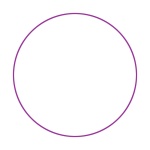Lens Aperture : Effects on exposure and ‘depth of field’
A lens aperture controls:
- how much light enters the camera
- depth of field (focus)
Most people get confused over ‘aperture’ settings, as a large aperture features a small ‘f’ number (eg f1.2) and a small aperture features a large ‘f’ number (eg f16)
‘f’ being the ‘f-stop’ number.
Dark environment
In a dark environment, we usually want to let more light into the camera, to prevent under-exposure (resulting in dark images).
- This requires a larger aperture, like f1.2, f.1.4
- We can also increase shutter times, lengthening exposure time, eg 1/8th, 1/2th of a second (or longer).
Light environment
If we have an abundance of light we usually want to limit light entering camera, to prevent over-exposure (resulting in white / blown out out images).
- This requires a smaller aperture, like f11, f16
- we can also decrease shutter time, shortening exposure time, eg 1/1000th, 1/2000th of second.
f-stop explained
The ‘f-stop’ number describes the ratio of the iris (aperture) opening in relation to the focal length of the lens.
Above : Apertures of f1, f2 and f4 (hover mouse over for explanation). Purple line represents an aperture diameter equal to lens focal length.
The above, in context (Spheron system)
On the default 16mm NIKON f2.8 lens fitted to the Spheron SceneCam system, the above iris is approximately the size shown below.
And if you are wondering why you don’t see many f1 lens – cost and rarity! Canon 50mm f1 retailed at $4120 (pre 2000 prices)
A Canon EF 50mm f/1.2.L USM will cost you approx $1400 today
Infographics by Huw Thomas






